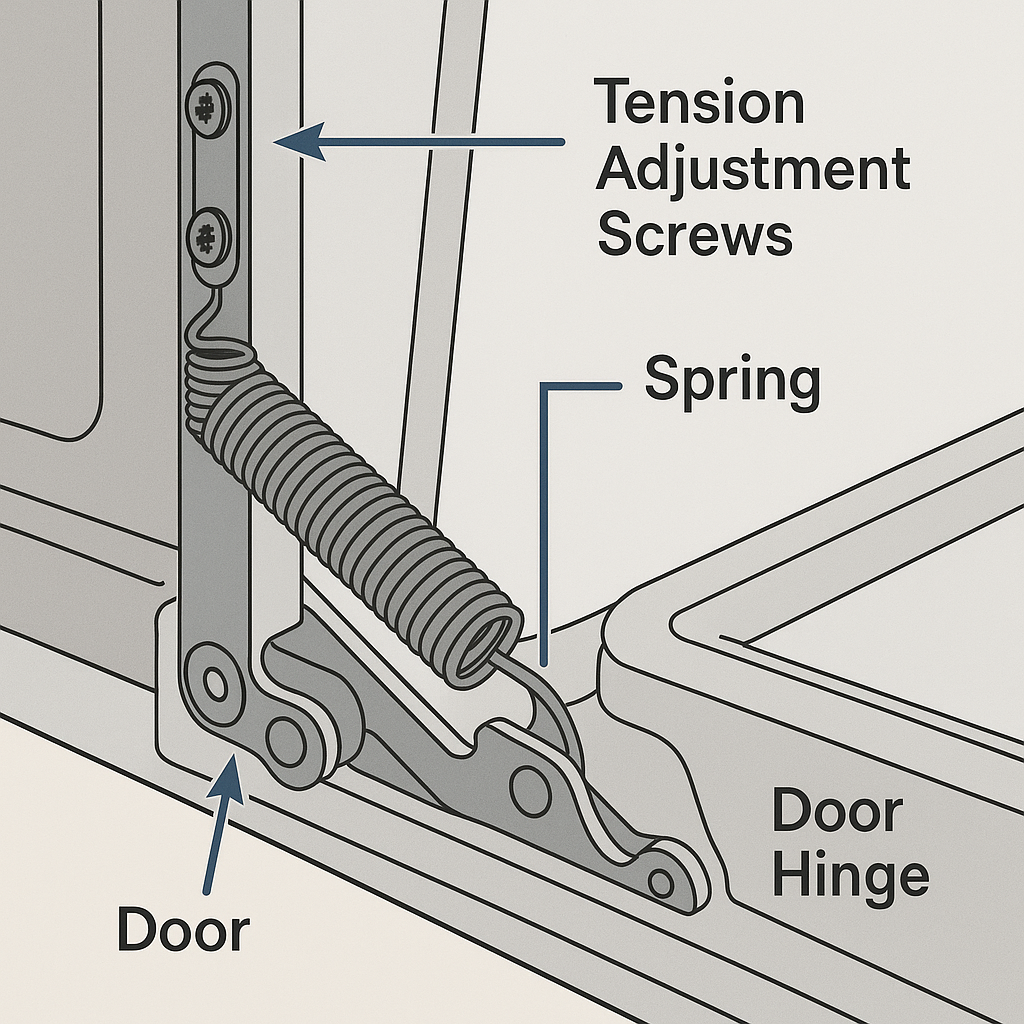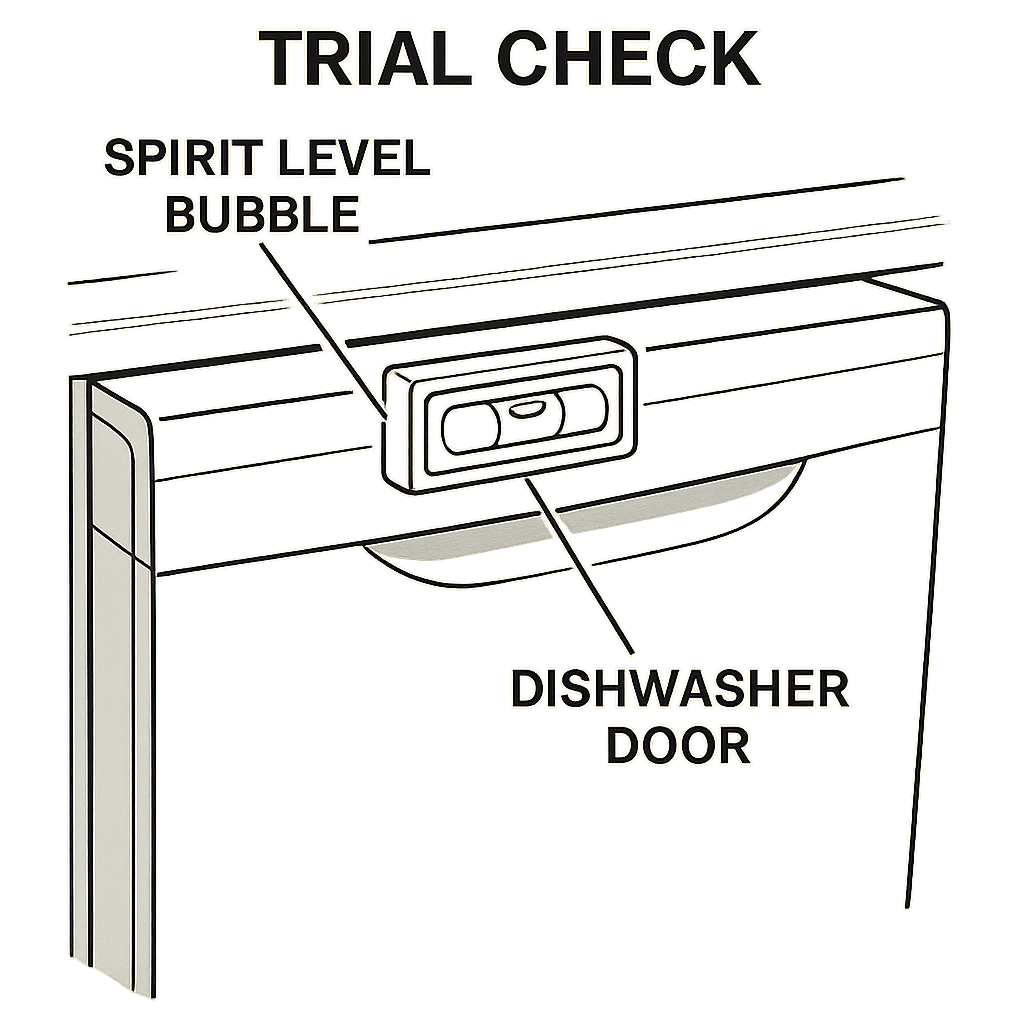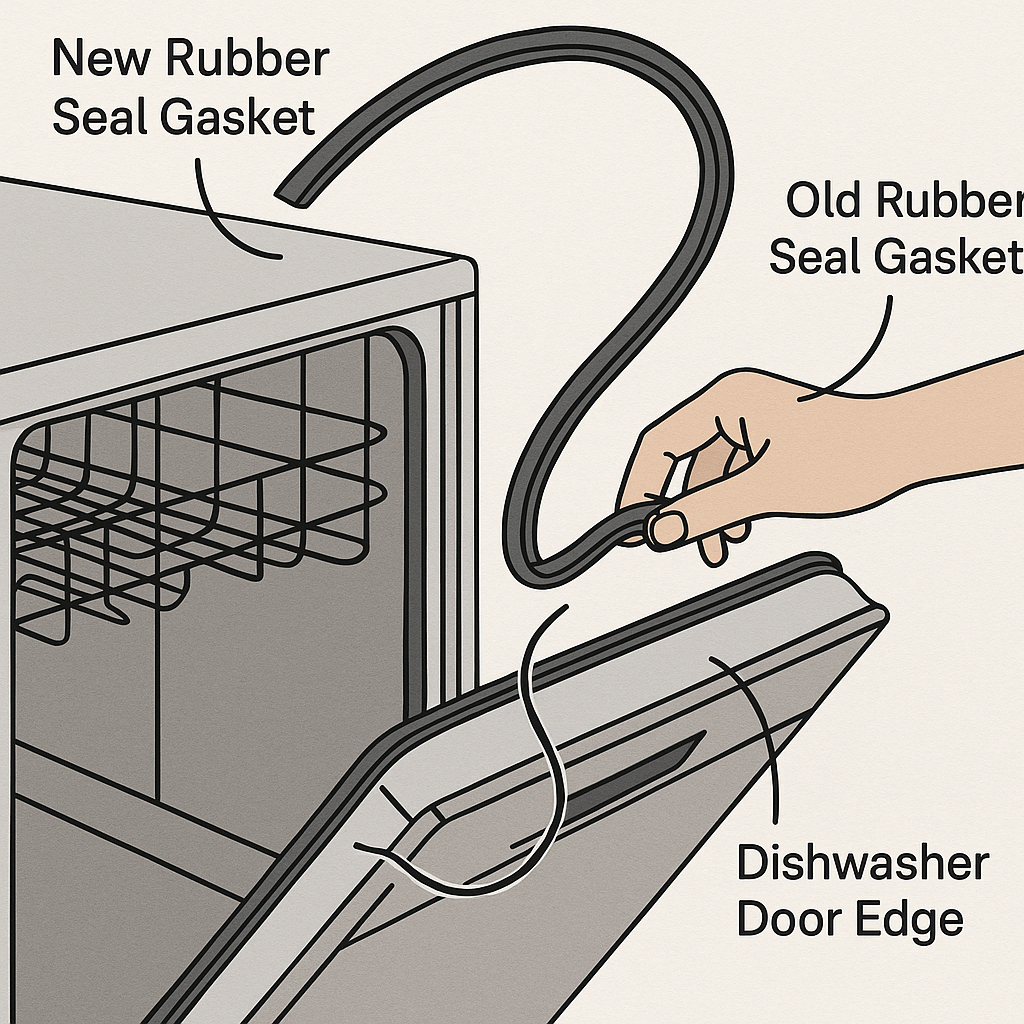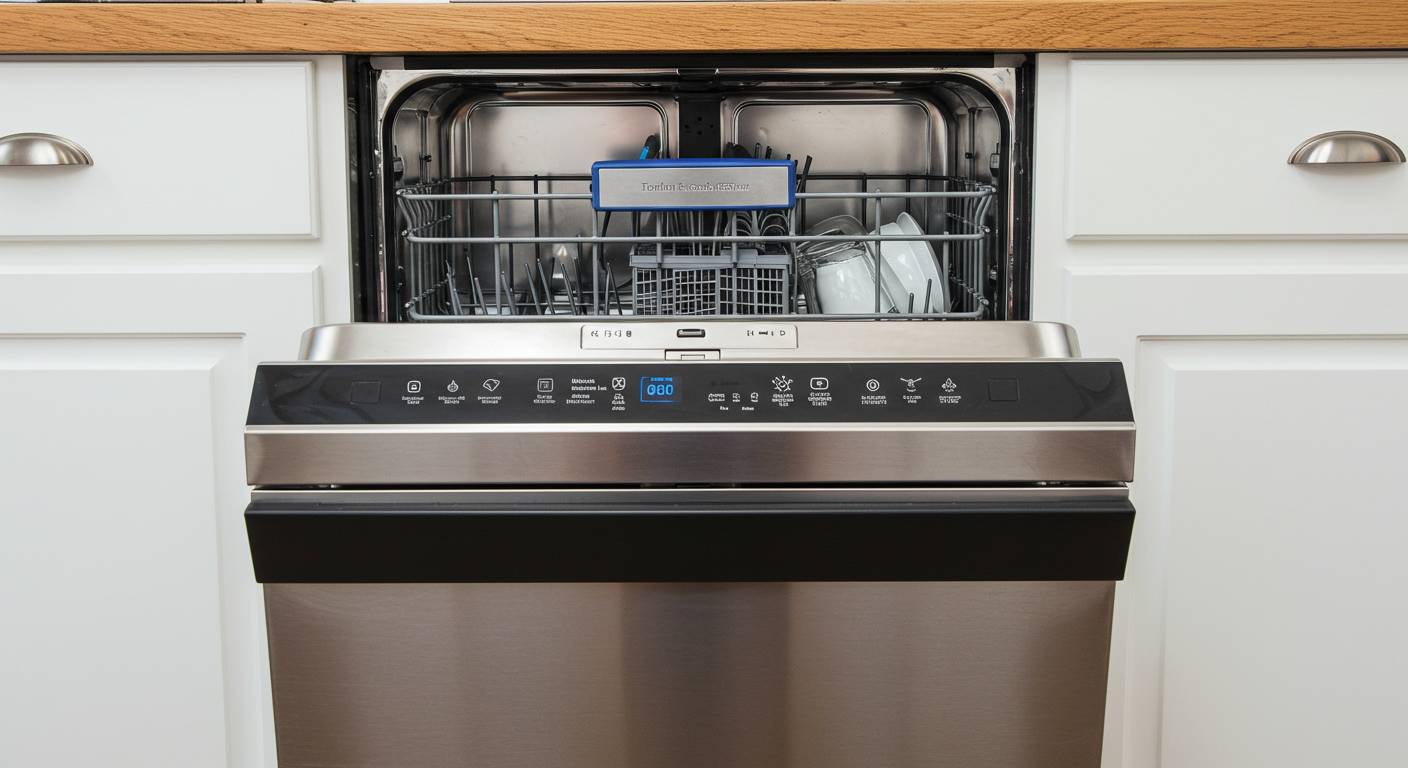Nothing's quite as frustrating as a dishwasher door that simply won't cooperate. Whether it's refusing to close properly, failing to latch securely, or seeming to have developed a mind of its own, a malfunctioning door can turn your kitchen routine upside down. The good news is that most dishwasher door problems are surprisingly straightforward to diagnose and fix yourself, saving you both money and the hassle of calling out a repair engineer.
The most common culprit behind door closure issues is improper door spring tension—a relatively simple adjustment that can restore your dishwasher to perfect working order. However, several other factors can prevent your door from closing or latching properly, from basic levelling problems to worn seals and damaged components.
The Most Common Solution: Adjusting Door Spring Tension
Door spring tension problems account for roughly 60% of all door closure issues, making this your first port of call for troubleshooting. The door springs are designed to counterbalance the weight of your dishwasher door, ensuring it stays closed during operation and opens smoothly when unlatched.
When the spring tension is set incorrectly, the door may feel too light (causing it to spring open unexpectedly) or too heavy (preventing it from staying closed). This is particularly common if you've recently had a custom door panel fitted or if the springs have simply stretched over time.

Close-up of the adjustment screws used to set spring tension correctly.
Adjusting Spring Tension on Stainless Steel Tub Models
- Locate the adjustment screws at the base of the dishwasher door, typically found at the front left and right corners.
- Open the door to approximately 45 degrees and release it—it should stay in position.
- If the door falls closed, the springs need more tension: turn the screws clockwise using a Phillips-head screwdriver.
- If the door springs open, reduce tension by turning the screws anticlockwise.
- Make equal adjustments to both screws to maintain balance.
- Test the door by opening it halfway and letting go—it should remain steady.
Adjusting Spring Tension on Plastic Tub Models
Plastic tub models typically use a different system where you physically reposition the spring ends:
- To decrease tension (if door closes too quickly): Move the spring end towards the front of the dishwasher.
- To increase tension (if door falls open): Move the spring end towards the back of the dishwasher.
- Ensure both springs are positioned in matching notches on left and right sides.
Check Your Dishwasher's Level
A dishwasher that wasn't properly levelled during installation can cause persistent door problems. Even a slight tilt can prevent the latch from aligning correctly with the strike plate, making closure difficult or impossible.
How to Check if Your Dishwasher is Level
- Place a spirit level on the door when it's in the closed position.
- Check both front-to-back and left-to-right alignment.
- Inspect the front edge alignment with your cabinet doors.
- Look for gaps between the dishwasher and surrounding cabinets.
Levelling Your Dishwasher
- Access the levelling legs by removing the bottom panel (typically held by screws).
- Use a spanner or adjustable wrench to turn the legs clockwise to raise, anticlockwise to lower.
- Adjust gradually and check level frequently.
- Ensure the dishwasher sits firmly against the floor on all contact points.

Using a spirit level ensures your dishwasher sits true in its housing.
Remove Obstructions from Door Seals
Sometimes the simplest problems cause the most frustration. Items stuck between the door seal and tub can prevent proper closure, and it's surprisingly easy to miss them during routine loading.
Common Problem Areas
- Cutlery that's slipped between rack bars.
- Large food particles caught in the door seal groove.
- Plastic wrap or labels from dishes that have worked loose.
- Dishwasher tablet packaging that hasn't fully dissolved.
Cleaning and Inspection Process
- Remove both dish racks for better access.
- Run your hand along the door seal feeling for foreign objects.
- Check both upper and lower seal areas thoroughly.
- Use a torch to illuminate dark corners and recesses.
- Clean any debris with warm, soapy water and a soft cloth.
Inspect and Replace the Door Seal
The rubber door seal (also called a gasket) creates a watertight barrier around the dishwasher door. Over time, these seals can become cracked, warped, or simply lose their flexibility, preventing the door from closing properly.

Replacing a worn seal restores a snug fit and prevents leaks.
Signs Your Door Seal Needs Replacement
- Visible cracks or tears in the rubber.
- Hard or brittle texture instead of soft and flexible.
- Water leaking from around the door during operation.
- Gaps visible when the door is closed.
- Discolouration or mould growth on the seal.
Replacing the Door Seal
Safety first: Ensure your dishwasher is unplugged before starting this repair.
- Remove the old seal by gently pulling it away from the door frame all around the perimeter.
- Clean the seal channel thoroughly with warm, soapy water.
- Dry completely with a soft cloth.
- Position the new seal with the flat side facing outward.
- Start at the bottom left and work your way around, pressing firmly into the channel.
- Trim excess seal if needed, leaving about 2cm overlap at the join.
- Test the door closure to ensure proper sealing.
Examine the Door Latch Mechanism
The door latch is the mechanical component that actually secures the door in the closed position. If it's damaged, misaligned, or worn out, the door simply won't stay shut—and your dishwasher won't start.

A clear schematic helps you identify and test each latch part.
Diagnosing Latch Problems
- Visual inspection: Look for cracks, breaks, or obvious damage.
- Test the mechanism: Push the latch to see if it clicks securely into place.
- Check for looseness: Ensure all screws holding the latch are tight.
- Listen for unusual sounds: Grinding or scraping may indicate internal damage.
When to Replace the Latch
If your latch shows any of these symptoms, replacement is typically the most reliable solution:
- Broken plastic components or cracked housing.
- Bent metal parts that prevent proper engagement.
- Worn internal springs that lack tension.
- Electrical failure in models with micro switches.
Check Door Hinges and Strike Plates
The door hinges allow smooth opening and closing, while the strike plate (located on the dishwasher frame) provides the anchor point for the latch. Problems with either component can prevent proper door operation.
Hinge Problems
- Squeaking or grinding when opening/closing.
- Door appears crooked or doesn’t hang straight.
- Visible rust or damage on hinge components.
- Door feels loose or wobbly during operation.
Strike Plate Issues
- Misalignment preventing latch engagement.
- Loose mounting screws allowing movement.
- Cracks or breaks in plastic strike plates.
- Rust or corrosion affecting metal components.
Adjusting or Replacing Strike Plates
Strike plate adjustment is often the simplest fix for alignment issues:
- Loosen the mounting screws slightly (don’t remove completely).
- Adjust the position until the latch engages properly.
- Tighten the screws while holding the plate in position.
- Test the door closure several times to ensure consistency.
For replacement, the process typically involves sliding out the old strike plate and sliding the new one into place—no tools required for most models.
Troubleshooting Steps Summary
When your dishwasher door won't close or latch properly, follow this systematic approach:
- Check for obvious obstructions in the door seal area.
- Adjust door spring tension (the most common fix).
- Verify the dishwasher is level and properly installed.
- Inspect and clean the door seal thoroughly.
- Examine the latch mechanism for damage or wear.
- Check hinges and strike plate alignment.
- Test after each adjustment to isolate the successful fix.
